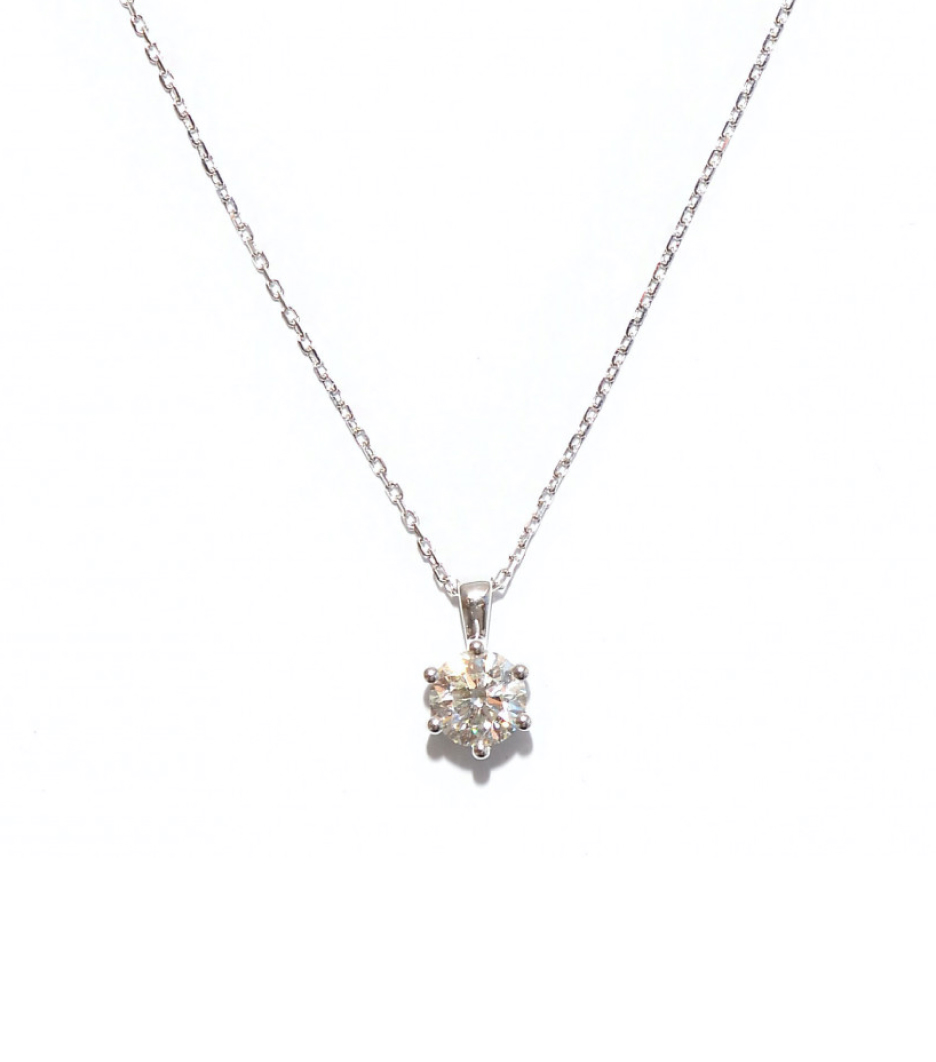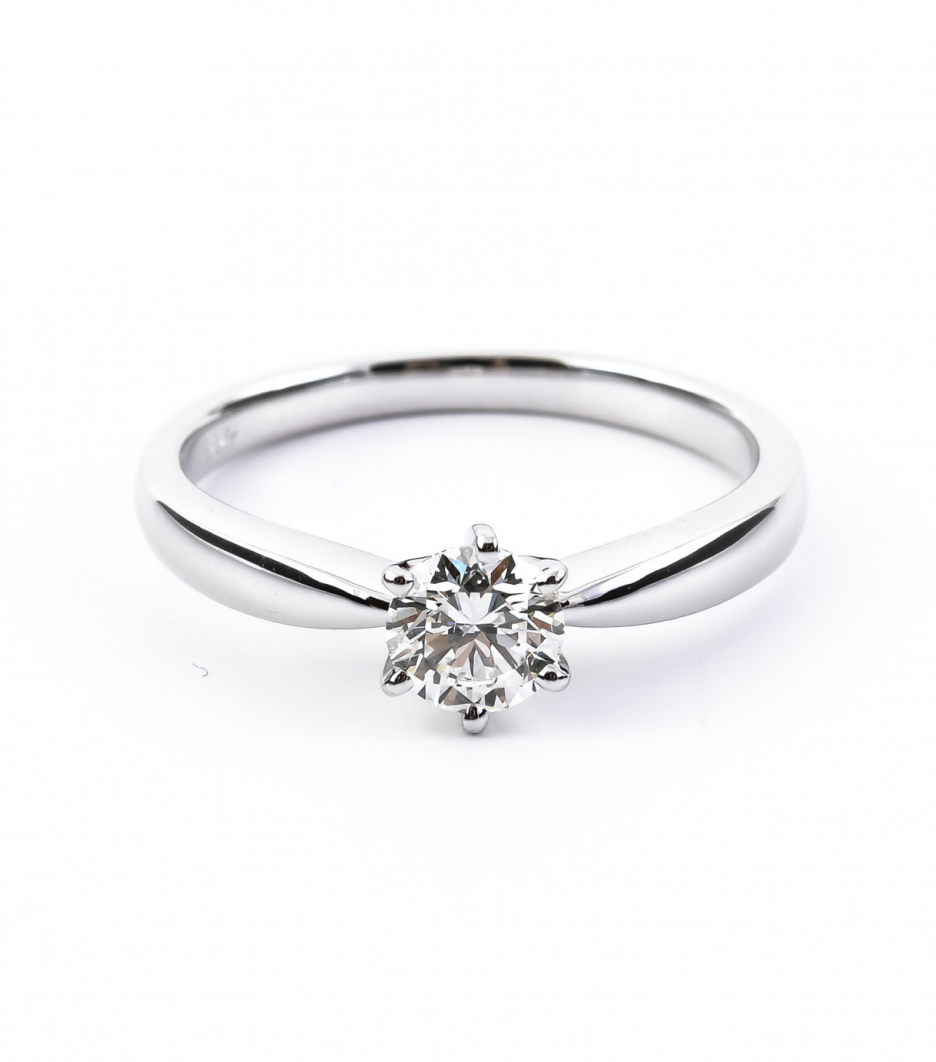The 4 Cs Guide to Diamond selection
To ensure you do not find yourself dazzled when choosing the perfect diamond jewellery, familiarize yourself with the universally acknowledged standard characteristics for both appearance and value - known as the 4 Cs: Cut, Carat Weight, Colour, and Clarity. This manual is essential for empowering you to make informed choices and never miss the mark when seeking the perfect diamonds.

What are the 4 Cs
The concept of the 4 Cs as we know it today, was introduced by the Gemological Institute of America (GIA). More specifically, professional evaluation of diamond jewellery was initiated by Robert M. Shipley in the 1940s. The 4 Cs assist jewellers in pricing their pieces and can also guide first-time buyers to select the most suitable diamonds for their preferences and needs.
Each of the four Cs delineates a certain quality of the diamond. Carat weight defines the size of the gem, the five grades of a cut affect the reflection. Colour grade is used to describe the brilliance, while clarity explains the visual flaws.

What is Cut
When considering the cut of a diamond, one might associate it with the shape of the diamond. While that is somewhat logical, in the diamond grading system, ‘cut’ refers to the arrangement of a diamond’s facets and how they interact with light. This is crucial because it directly influences the visual experience, as facets play a significant role in how the diamond reflects light or sparkles. Two key aspects of the cut are polish, describing the smoothness of the diamond’s facets, and symmetry, referring to their alignment. A diamond cut is graded based on a 5 tier chart, ranging from poor to excellent and directly affects its pricing.
Based on the proportions of the facets, there are three styles: brilliant, step or mixed. This cut further affects the shape of the diamond.
Brilliant Cut Diamond
Crafted to enhance sparkle and brilliance, this diamond cut style traditionally showcases 57 triangular and kite-shaped facets that fan outward from the stone’s centre in specific proportion and depth. Achieving perfect proportion and symmetry in the cut results in the creation of a Hearts and Arrows diamond. When viewed from the top, eight flawless arrows can be seen, while from the bottom it is eight perfect hearts. The brilliant cut is used in round, princess, marquise, and oval diamonds. The precise arrangement of facets in the brilliant cut contributes to its ability to showcase the diamond's inherent beauty, making it a preferred choice for those seeking a classic and dazzling look.
Step Cut Diamond
A step cut diamond has a softer glow because of its longer, more narrow facets that are arranged in a step-like pattern. Instead of intensifying the glow, this type of facets create a more sophisticated, mirror-like look, magnifying the natural beauty of the stone. These diamonds are favoured by those seeking a more classic look in their jewellery.
Mixed Cut Diamond
If you want to get the best of both worlds and have a diamond that can have both the sparkle and the angular shape, a mixed cut diamond is the best option. Mixed cuts also offer variations in design, allowing for creativity in diamond cutting.
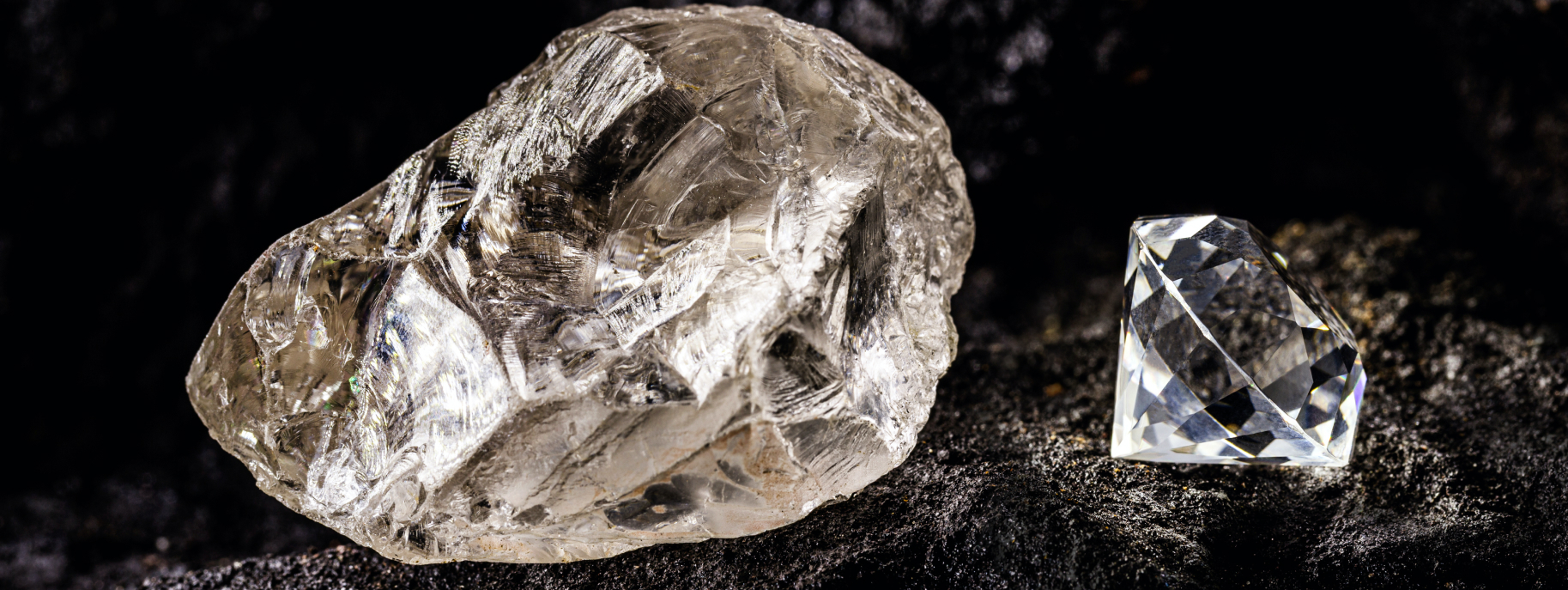
Fancy shapes
'Cut' affects the style in which a diamond is shaped during the polishing process. The selection of this style - typically either round or fancy - is influenced by the state, size and proportions of the natural stone. While the round brilliant cut is considered a standard, variations of fancy cuts fluctuate in popularity, depending on fashion trends. Certainly, there are numerous unique shapes but here we have explored the most popular ones.
Princess cut
You may have heard of these rings in connection with celebrity engagement announcements - we're talking, for example, about the iconic two-stone engagement ring worn by Emily Ratakowski. Currently the second most favoured option, making a return after its initial debut in the world of diamonds in the 1960s. Princess cuts are more cost-effective than round cuts as the shaping of those causes less waste of the natural stone.
Oval cut
Resurging in popularity, the oval shape stands as a timeless choice. With a resemblance to the round brilliant cut, offering a slighter, but still a captivating sparkle. The elongated appearance is also a popular choice, known to complement fingers in a flattering manner. The versatility of the oval cut makes it suitable for various types of jewellery, from engagement rings to pendants, portraying a timeless aesthetic with a touch of individuality.
Emerald cut
The emerald cut represents another incredibly flattering elongated shape that adds a touch of sophistication to ring design. Endorsed even by Queen B herself, it stands as a highly popular choice for engagement rings. The emerald cut's enduring charm lies in its clean lines, stepped facets, and open table, showcasing the diamond's clarity and purity. Its versatility makes it an ideal choice for those seeking a classic yet distinctive look in their jewellery.
Marquise cut
The marquise cut presents an unusual yet versatile shape. Featuring an elongated silhouette with pointed ends, the marquise cut is celebrated for its uniqueness. The main quality to look for in this shape is symmetry, as any hint of asymmetry in this shape can be quite noticeable and compromise its overall aesthetic. It is essential to balance the length with depth to allow enough light to pass through the stone, highlighting its brilliance.
Asscher cut
Asscher cut diamonds feature a clip-cornered square shape and an elevated crown, distinguishing them from other diamond shapes and contributing to its vintage charm. Invented and patented by Joseph Asscher in the beginning of the 20-th century, the cut originally featured 50 or 58 facets, but has since expanded to 74. This facet expansion elevates the brilliance of the Asscher cut, making it an even more enchanting choice.
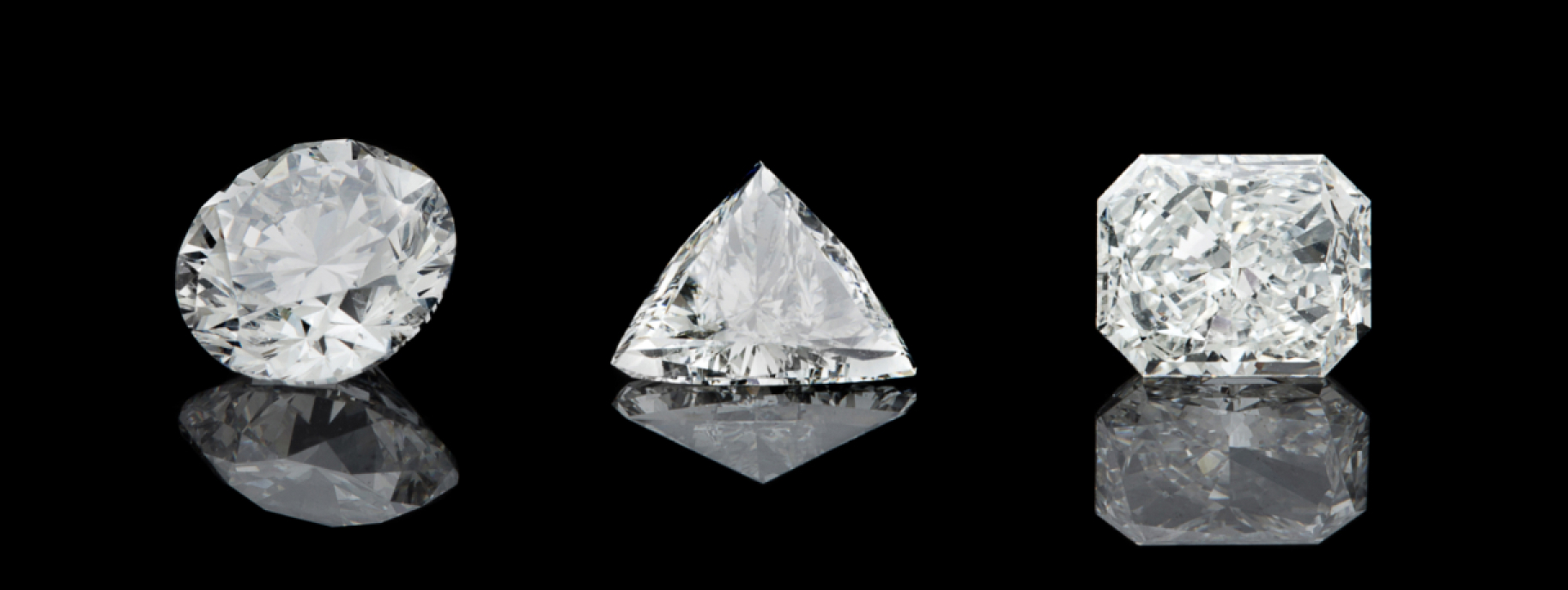
What is Colour
Colour holds the second most significant position in diamond grading. Diamonds span a spectrum of 23 grades, from colourless to yellow, with colourless being deemed the most exceptional. The grading of diamond colours follows alphabetical letters, starting from D and progressing to Z. Diamonds in the D-J range are considered colourless to almost colourless, while ones in the K-Z range exhibit a more noticeable brownish or yellowish tone, detectable to a naked eye. To assess diamond colour, specialists compare each diamond to one whose colour has already been graded, examining them under specific lighting conditions.
As colour is a means of measuring quality, it also affects pricing. However, diamonds within the colourless or near-colourless grade range may not exhibit obvious differences in appearance but can have significant differences in their worth. Diamonds in the lower grade of course remain diamonds and can still look stunning in certain jewellery settings. For example, rose gold may slightly balance out and compliment the yellow tones in the diamonds. On the other hand, with higher carat white gold, a more colourless diamond would be more fitting.
As the brilliance of a diamond is highly dependent on its shape, certain diamond shapes can also impact the appearance of colour. Round Brilliant diamonds are exceptionally symmetric, which can take away from the slightly off-colouring, same goes with Emerald. However, step-cut diamonds with a broader visible surface, like Oval or Baguette, allow to see colour more clearly and pair better with colourless or near-colourless diamonds.
Carat weight also plays a role in the way a diamond’s colour appears. While with a smaller diamond it is possible to get away with a lower grade colour, as the size increases, the colour may become more noticeable, so opting for a higher colour grade would be encouraged.
Fancy coloured diamonds
Certainly, a pure diamond with a flawless chemical structure is entirely colourless. However, an intense colouration can increase its value. Diamonds exhibiting hues beyond the Z category are categorized as fancy colours. These are evaluated on a separate 27-hue scale that covers the entire spectrum for coloured gems. These hues' saturation levels are further characterized using one of nine descriptors: Faint, Very Light, Light, Fancy Light, Fancy, Fancy Dark, Fancy Intense, Fancy Deep, and Fancy Vivid.
Fancy coloured diamonds therefore stand as the most valuable gems in the world. Their value can also experience boosts from fashion trends, as was the case with the popularity of pink diamonds following Jennifer Lopez’s pink diamond engagement ring. Other honourable mentions include the deep-blue Hope Diamond, the Oppenheimer Blue, officially recognized as the largest fancy vivid blue diamond by the Gemological Institute of America, and the incredibly rare red diamonds, with only around 30 known to exist in the entire world.

What is Clarity
Another crucial criterion that measures the quality of a diamond is its clarity, referring to its imperfections. Diamond clarity is assessed through 11 grades, ranging from Flawless (FL) to Included3 (I3). The grades are assigned based on factors such as the size, number, location of imperfections, and the extent to which they affect the way the stone reflects the light.
Starting off with the Flawless (FL) and Internally flawless (IF), these stand as the highest clarity grades, being both the rarest and most expensive. Diamonds in these categories showcase no blemishes or scratches and can therefore cost a few hundred thousand dollars.
Diamonds falling within the grades of Very Very Slightly Included (VVS) to Very Slightly Included (VS) are more accessible. Their imperfections are only apparent under a magnifier and have minimal impact on their brilliance. As the FL and IF diamonds are extremely uncommon, diamonds in VVS or VS grades are the ones that are most often used in jewellery.
Lower-grade diamonds, falling within the Slightly Included (SI) and Inclusions (I) range, exhibit scratches and blemishes that are more obvious. These diamonds are more cost-efficient, but they often have a cloudy appearance due to the impact on light reflections. However, in recent years, imperfect diamonds, often referred to as salt and pepper diamonds, have gained popularity. Their black specks and distinct smoky appearance set them apart as a unique and affordable choice compared to the classic colourless diamonds, making them a preference for many fashion icons.
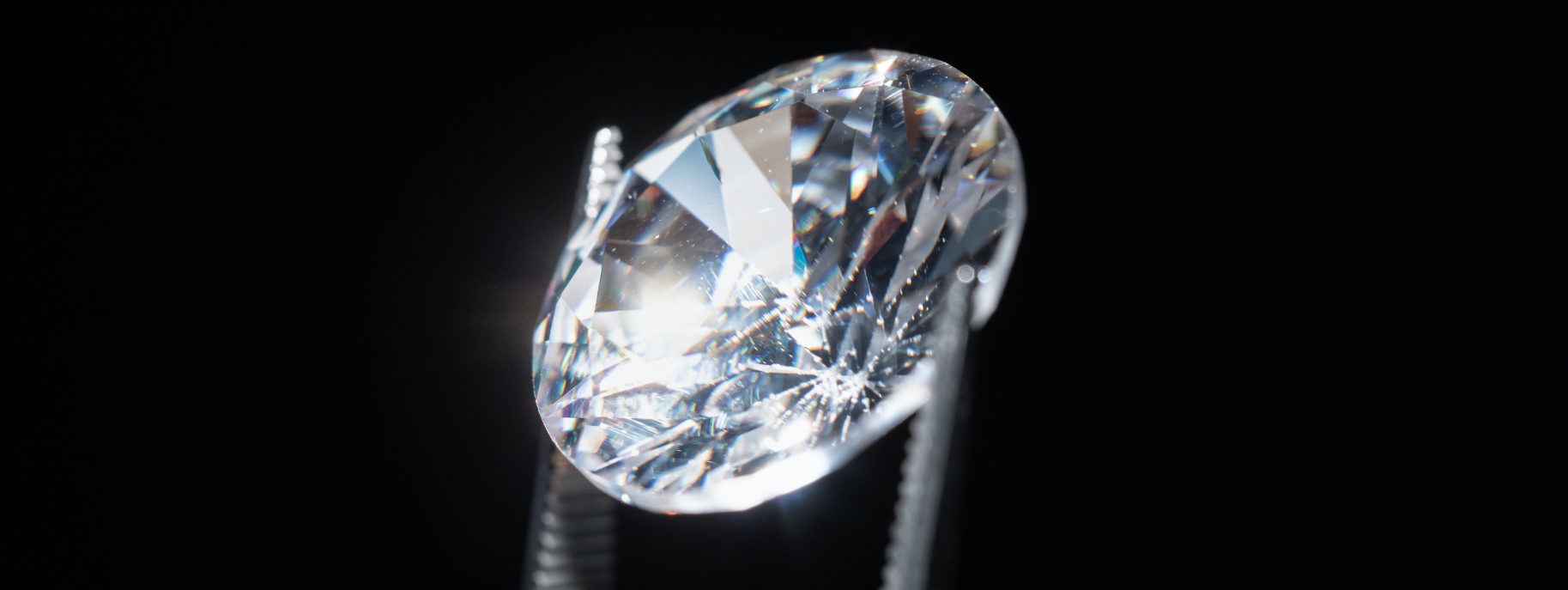
What is Carat
Diamond carat refers to their weight, where 1 carat is equivalent to 0.20 grams. If a diamond is smaller than one carat, it is measured in points, with 100 points equal to one carat.
It would make sense that weight naturally influences size, but that is not the case with diamonds. Even if two diamonds weigh the same, their measurements in terms of surface area can vary significantly. A well-cut diamond with the right proportions reflects light better, giving it more sparkle and brilliance while making the most of its surface area. On the other hand, a poorly cut diamond of the same weight might carry most of that weight in its pavilion or the bottom part, making it appear smaller and less brilliant.
As the article explains, weight or size is not necessarily the primary factor in diamond appearance and value. A large diamond with grade Z colour or grade I clarity could be priced significantly lower than a smaller but colourless FL grade diamond. Therefore, with diamonds it is important to focus on quality rather than weight or size.
Which of the 4Cs is the most important
In the world of diamonds, the cut is considered as the most important of the 4Cs, as it has the strongest impact on radiance. Moreover, this factor is particularly dependent on the skill and expertise of the jeweller shaping the natural stone.
Nevertheless, it is crucial to understand that all 4Cs are incredibly important and only a perfect balance of them can yield the most stunning and captivating gem. The ideal diamond strikes a harmonious balance among these factors, resulting in a gem that not only meets personal preferences but also possesses enduring value and captivating beauty.
